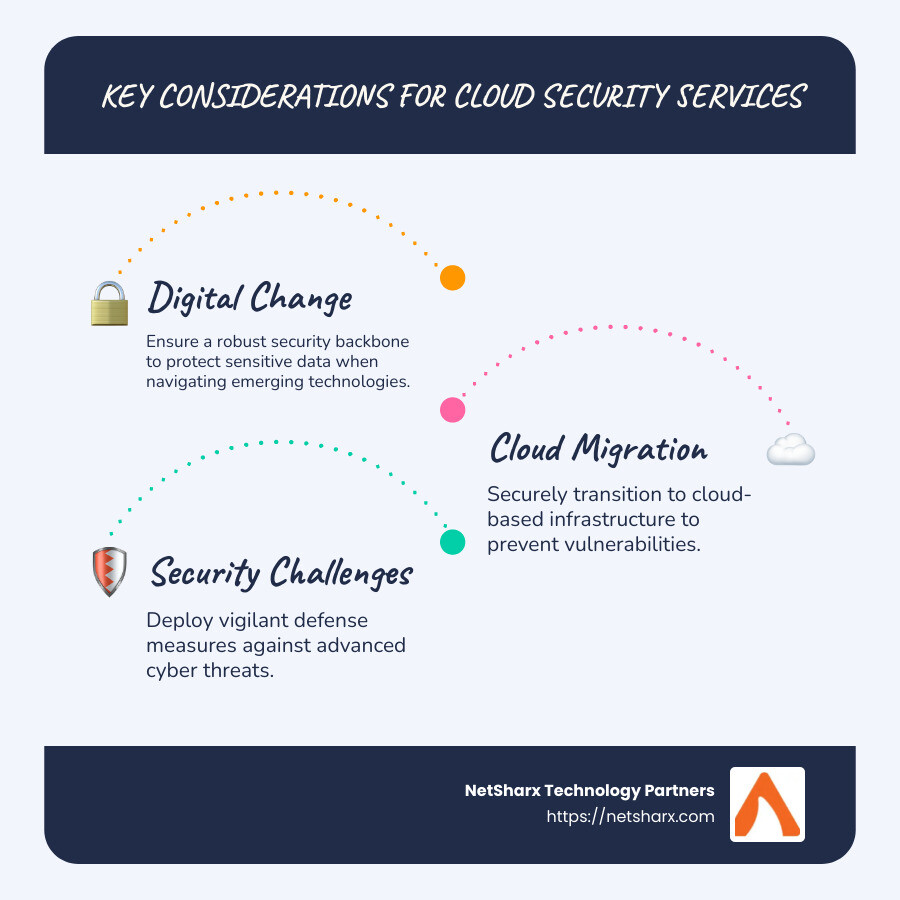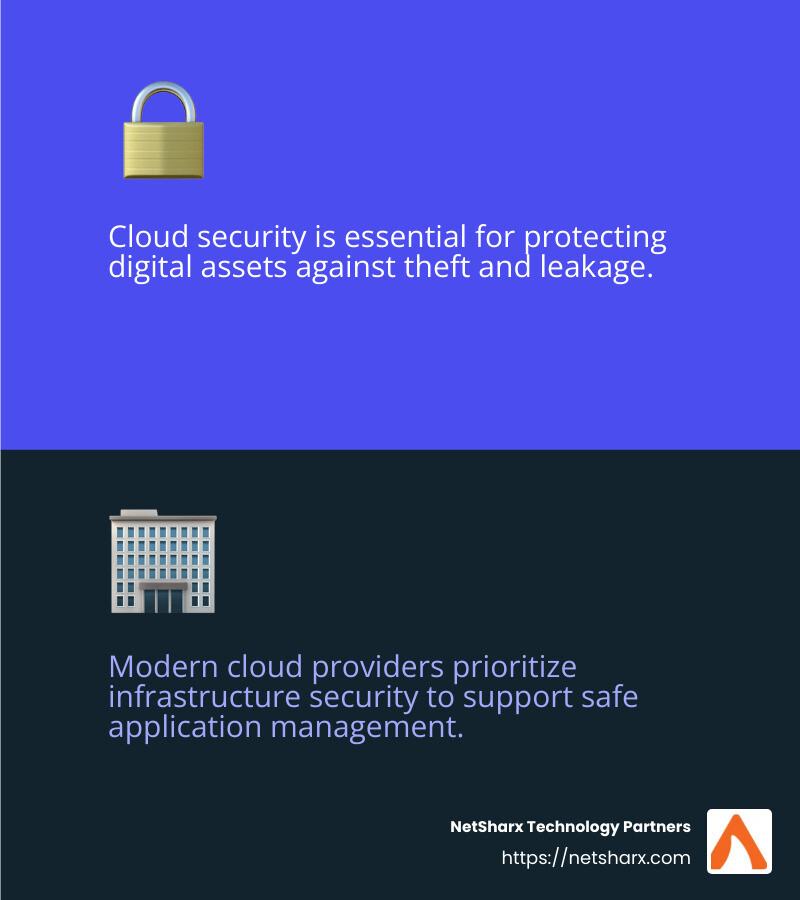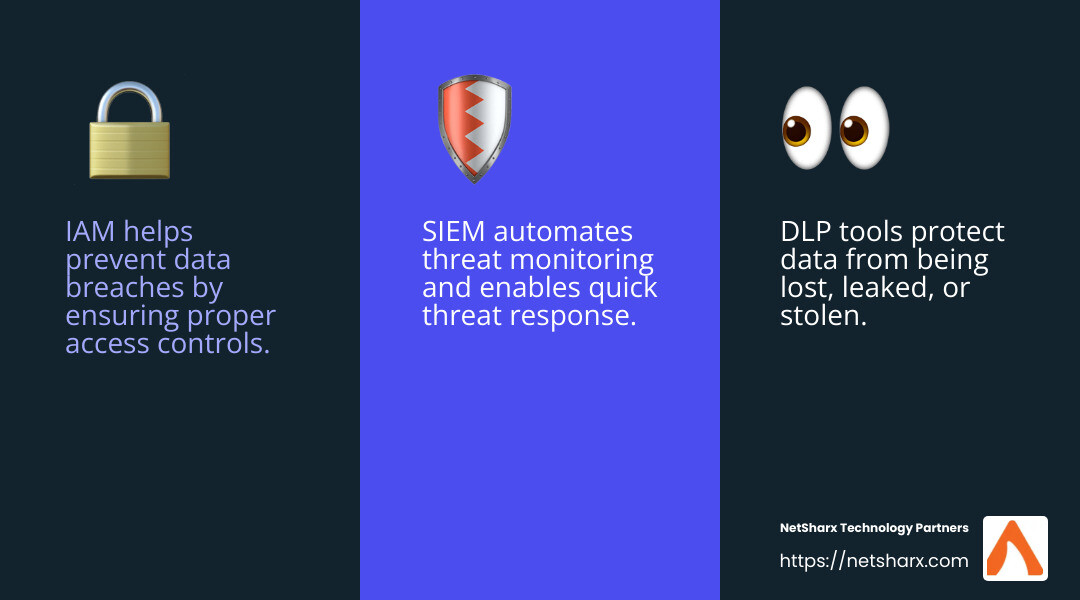Cloud security services are essential as businesses grapple with digital change and cloud migration, ensuring their data remains safe amidst various security challenges. More and more businesses are moving their operations to the cloud, driven by a need for flexibility, scalability, and technological advancement. This shift, however, introduces new security challenges that must be addressed proactively. Here are three key considerations:
- Digital Change: Navigating emerging technologies requires a robust security backbone to protect sensitive data.
- Cloud Migration: Transitioning to cloud-based infrastructure can expose vulnerabilities if not properly secured.
- Security Challenges: Cyber threats are more advanced, demanding vigilant defense measures.
“Security should always be the #1 priority when it comes to digital change,” as highlighted by industry experts. This growing emphasis on security is crucial for protecting sensitive data and maintaining business continuity in today’s digital landscape.
I’m Ryan Carter, founder and CEO of NetSharx Technology Partners. With experience in cloud security services, I’ve seen the crucial role they play in enabling secure, efficient digital change.
Cloud security services terms made easy:
– cloud security monitoring
– cloud security platform
Understanding Cloud Security Services
When it comes to cloud security services, understanding their core components is crucial for any business looking to protect its digital assets. Let’s break down the essentials: cloud security, infrastructure protection, and data privacy.
Cloud Security
Cloud security is the practice of protecting data, applications, and infrastructures involved in cloud computing. It’s about safeguarding information from theft, leakage, and deletion. As organizations move more of their operations to the cloud, robust security measures become non-negotiable. This includes using advanced threat detection and real-time monitoring to keep an eye on potential vulnerabilities.
Infrastructure Protection
Infrastructure protection is the backbone of any cloud security strategy. It involves securing the cloud’s physical and virtual components, such as servers, networks, and storage systems. Modern cloud providers, like AWS, are designed with security as a top priority, offering a secure global cloud infrastructure. This infrastructure allows businesses to build, migrate, and manage applications with confidence, knowing that the underlying systems are protected.
Data Privacy
Data privacy is all about ensuring that personal and sensitive information is accessed and used appropriately. Data privacy is not just a legal obligation but a trust factor for businesses. Cloud providers typically offer strong access controls and encryption technologies to protect data both at rest and in transit. Compliance with regulations like GDPR and CCPA is also crucial, as failing to meet these standards can lead to serious financial penalties.
In conclusion, cloud security services are fundamental for any business operating in the cloud. They provide the necessary tools and practices to protect against cyber threats, ensure infrastructure integrity, and maintain data privacy. As we dig deeper into cloud security, a proactive approach is key to safeguarding your digital sky.
Key Components of Cloud Security
When it comes to protecting your business in the cloud, understanding the key components of cloud security is a must. Let’s explore three critical areas: Identity and Access Management (IAM), Data Loss Prevention (DLP), and Security Information and Event Management (SIEM).
Identity and Access Management (IAM)
Think of IAM as the digital bouncer for your cloud environment. It’s all about ensuring that the right people have the right access to the right resources. IAM tools create digital identities for users and enforce policies to monitor and restrict access as needed.
Why is IAM crucial? Misconfigured access points can lead to data breaches. By using IAM, businesses can avoid these pitfalls. It helps in setting up multi-factor authentication and other access controls to keep unauthorized users out.
Data Loss Prevention (DLP)
Data is the lifeline of modern businesses, and losing it can be catastrophic. DLP solutions are like the security guards of your data. They work to prevent unauthorized access and protect data from being lost, leaked, or stolen.
DLP tools use a mix of alerts, encryption, and other preventive measures to secure data whether it’s at rest or in motion. This is particularly important in cloud environments where data can be accessed from anywhere, potentially increasing the risk of leaks.
Security Information and Event Management (SIEM)
SIEM is the watchdog that never sleeps. It automates threat monitoring, detection, and response in cloud environments. By using AI-driven technologies, SIEM correlates log data across multiple platforms and digital assets.
The benefit? IT teams can react quickly to potential threats, applying security protocols effectively. This rapid response capability is crucial for minimizing damage during a security incident.
In summary, these key components work together to build a robust cloud security framework. They ensure that businesses can protect their data, manage access effectively, and respond swiftly to threats. As you explore cloud security, these tools are essential to keeping your digital assets safe and sound.
Top Cloud Security Threats
When it comes to cloud security, understanding the top threats is crucial for safeguarding your digital assets. Let’s explore three major threats: cyberattacks, configuration errors, and data leaks.
Cyberattacks
Cyberattacks are like digital pirates, constantly evolving and becoming more sophisticated. They aim to steal, expose, or destroy your data. According to research, a staggering 79% of global companies experienced cybercrime in the past 12 months. This highlights the urgent need for robust cloud security measures.
Cloud environments can be particularly vulnerable to attacks like Denial-of-Service (DoS) and Distributed Denial-of-Service (DDoS), which can crash systems or degrade performance. These attacks often serve as distractions, diverting attention from more dangerous threats.
Configuration Errors
Configuration errors are like leaving the door open uped in a secure facility. They often happen when security settings are mismanaged or not configured at all. These errors can open the door to potential breaches, making them a significant threat.
Misconfigured assets are a common issue, with many breaches traced back to this problem. Simple mistakes like leaving default passwords unchanged or not setting appropriate privacy settings can create vulnerabilities. Cloud Security Posture Management (CSPM) solutions can help address these issues by organizing and deploying core security components.
Data Leaks
Data leaks are accidental or malicious exposures of sensitive information. They can happen when data is improperly handled or protected. The cloud’s accessibility from anywhere increases the risk of leaks, making data protection a top priority.
Data Loss Prevention (DLP) tools play a vital role in preventing leaks by using alerts, encryption, and other measures to secure data. These tools ensure that data remains safe, whether it’s at rest or in motion.
Understanding these threats is the first step in building a robust cloud security strategy. By staying informed and implementing the right tools, businesses can protect their digital sky from these looming dangers.
Best Practices for Cloud Security
Protecting your digital assets in the cloud requires a thoughtful approach. Here are some best practices that can help you keep your data secure:
Vulnerability Remediation
Think of vulnerabilities as tiny cracks in a dam. If left unchecked, they can lead to catastrophic failures. In cloud environments, software vulnerabilities are a primary target for attackers. Regular updates and patches are crucial. When vulnerabilities are found, they should be addressed immediately to prevent exploitation. Implement a system for automatic updates to ensure your defenses are always up-to-date.
Encryption
Encryption is the digital equivalent of locking your valuables in a safe. It scrambles data so that only authorized users can access it. In the cloud, sensitive data should be encrypted both at rest (when stored) and in transit (when being transferred). This ensures compliance with regulatory frameworks like GDPR and HIPAA, which mandate strong encryption standards. By encrypting data, you add an essential layer of protection against unauthorized access.
Access Controls
Access controls are like bouncers at a club, ensuring only the right people get in. They help prevent unauthorized access to cloud data and applications. Implementing strong identity management and authentication technologies, such as multi-factor authentication (MFA), is key. These tools verify user identities and limit access to sensitive information. Regularly review and update access permissions to ensure that only necessary personnel have access to critical data.
By following these best practices, you can build a strong foundation for cloud security. Safeguarding your digital assets is an ongoing process that requires vigilance and a proactive approach.
Frequently Asked Questions about Cloud Security Services
What are cloud security services?
Cloud security services are a set of procedures and technologies designed to protect digital assets stored in the cloud. They ensure that only authorized users can access sensitive data and applications. One key aspect of these services is user authentication, which verifies the identity of users trying to access the cloud. This often involves multi-factor authentication (MFA), adding an extra layer of security.
Another important component is data access control. This ensures that users have access only to the data they need, reducing the risk of data breaches. By implementing strong access controls, organizations can better protect sensitive information from unauthorized access.
What are the top security issues in cloud computing?
Cloud computing offers many benefits, but it also comes with its own set of security challenges. One major issue is denial of service (DoS) attacks. These attacks aim to overwhelm cloud services, making them unavailable to legitimate users. They can be costly and disruptive, often serving as a distraction while more serious breaches occur.
Data privacy is another critical concern. When data is stored in the cloud, it is essential to ensure it remains private and protected from unauthorized access. This involves encrypting data both at rest and in transit and complying with regulations like GDPR and HIPAA.
What are the categories of cloud security?
Cloud security can be divided into three main categories: provider-based, customer-based, and service-based security.
-
Provider-based security: This is the security provided by the cloud service provider. It includes infrastructure protection, physical security of data centers, and built-in security features.
-
Customer-based security: Customers are responsible for securing their data and applications in the cloud. This includes managing user access, encrypting data, and configuring security settings correctly.
-
Service-based security: This involves using third-party security services to improve cloud security. These services can provide additional layers of protection, such as advanced threat detection and response capabilities.
Understanding these categories helps organizations create a comprehensive security strategy that addresses all aspects of their cloud environment. By combining provider-based, customer-based, and service-based security measures, businesses can better protect their digital assets in the cloud.
Conclusion
As we wrap up our exploration of cloud security services, it’s clear that protecting digital assets in the cloud is both essential and complex. That’s where we, at NetSharx Technology Partners, come in. Our mission is to guide you through this complexity with custom, unbiased solutions.
Custom Solutions for Your Unique Needs
Every organization is different, and so are its security needs. We pride ourselves on offering custom solutions that fit your specific requirements. Whether you need help with identity and access management, data loss prevention, or any other aspect of cloud security, we’ve got you covered. Our team works closely with you to understand your challenges and provide solutions that truly address your needs.
An Unbiased Approach
When many vendors push their own products, our unbiased approach sets us apart. We don’t have any hidden agendas or ties to specific vendors, which means you get the best solution for your needs, not ours. With access to a vast network of over 350 cloud providers, we ensure that you receive competitive pricing and the best fit for your organization.
Partnering for Success
Think of us as your partner in technology change. From the initial assessment to ongoing support, we’re with you every step of the way. Our comprehensive support ensures that your cloud security strategy evolves with your business needs, keeping you ahead of potential threats.
In conclusion, cloud security services are a vital part of any organization’s digital strategy. At NetSharx Technology Partners, we’re committed to helping you steer these waters with confidence. Let’s secure your digital sky together.





